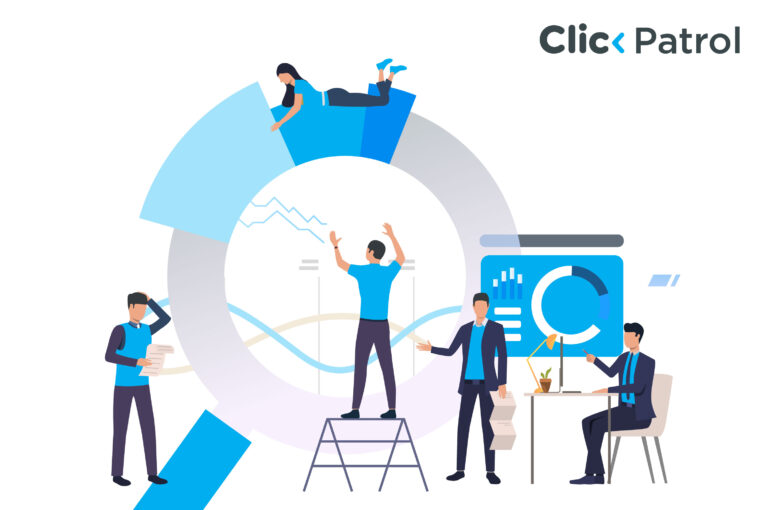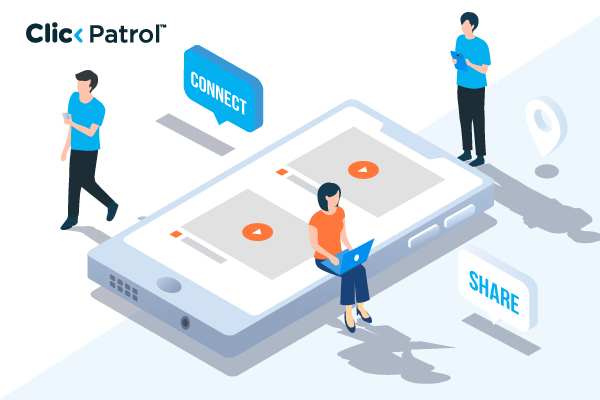
Offline conversion tracking in Google Analytics: How to measure real-world sales
Abisola Tanzako | Apr 15, 2025

Table of Contents
- What is offline conversion tracking?
- How offline conversion tracking works
- Why is offline conversion tracking important?
- How Google Analytics' offline conversion tracking operates
- Key components of offline conversion tracking
- Methods of sending offline conversion data to Google Analytics
- Best tools for offline conversion tracking in Google Analytics
- Why offline conversion tracking is crucial for Google Ads
- FAQs
90% of customer interactions still happen offline, making offline tracking essential (Forrester, 2024). Companies in digital marketing frequently use Google Analytics to monitor online conversions such as purchases, form submissions, and sign-ups.
However, many businesses use offline methods, such as phone calls, in-store visits, or direct client interactions, to finalize purchases after generating leads online.
This article explores everything you need to know about offline conversion tracking in Google Analytics, including its importance, setup process, best practices, and real-world applications.
What is offline conversion tracking?
Through offline conversion monitoring, businesses can link online interactions with offline sales, leads, or consumer activities.
Tracking how online engagements, like ad clicks, form submissions, or website visits, result in actions outside of the digital space aids in bridging the gap between digital marketing initiatives and actual revenue production.
Numerous companies rely on offline conversions, mainly retail, B2B services, healthcare, real estate, and automobiles.
Consumers frequently engage with advertisements or websites first, using phone conversations, in-store visits, or in-person meetings to finalize their purchase or sign a contract.
Businesses lose out on essential performance insights when offline tracking is not used, which makes it challenging to gauge the actual success of their digital marketing campaigns.
How offline conversion tracking works
Google Analytics provides a unique identifier to trace a user’s session when they click on an advertisement or complete a contact form.
The company can link the user’s initial online interaction to any offline conversions that the lead makes later, such as a phone consultation, in-store purchase, or contract signing.
Subsequently, this data is submitted to Google Analytics or Google Ads to determine actual conversion rates and adjust marketing strategies appropriately.
Why is offline conversion tracking important?
Many firms emphasize online conversions, whether form submissions or website sales.
However, failing to measure offline conversions can result in misleading performance insights and lousy marketing decisions in businesses where customers frequently complete purchases offline through phone conversations, in-store visits, or in-person meetings.
Offline conversion tracking ensures that businesses capture the full impact of their digital campaigns, enabling them to optimize strategies and maximize ROI. This is why it is important:
- More accurate ROI measurement: Companies risk underestimating the effectiveness of their ads if they do not track offline conversions. Even if a Google Ads campaign generates 100 leads, it appears worthless if only 10 convert to online sales. However, the real impact would be more significant if 40 more converts were offline.
- Improved ad spend allocation: By determining which keywords, advertising, or campaigns generate the most offline revenue, businesses can reallocate funds to high-performing tactics and reduce wasteful spending on low-value clicks.
- Better client insights: From the first online engagement to the last offline purchase, offline conversion tracking aids companies in comprehending the entire client journey.
- Optimal remarketing efforts: By excluding leads from remarketing efforts if they have previously converted offline, companies can save wasteful ad expenditures and concentrate on nurturing new prospects.
- Improved bidding techniques: Google Ads enables companies to automate and optimize bidding by using offline conversion data, guaranteeing that campaigns target the customers who are most likely to convert, whether online or offline.
How Google Analytics’ offline conversion tracking operates
Offline conversion tracking in Google Analytics allows businesses to connect online interactions (such as ad clicks, form submissions, or website visits) to offline actions (such as phone calls, in-store purchases, or signed contracts).
Google Analytics uses unique identifiers to link offline events to the initial online interaction because these offline conversions occur outside the digital environment.
Key components of offline conversion tracking
Google Analytics uses the following elements to track offline conversions precisely:
- User interaction with your website or ad: A user clicks on a Google Ad, fills out a form, or calls your business through an online ad extension.
- Google assigns a unique identifier: Every visitor is given a GCLID (Google Click Identifier) from Google Ads or a Client ID from Google Analytics. This identifier is crucial for linking online activity to offline actions.
- User converts offline: The consumer completes an offline action, including calling, going to a physical store, or completing an email transaction.
- Conversion is recorded in CRM or database: The business captures relevant details (customer name, phone number, Client ID/GCLID, conversion type, and date).
- Offline data is uploaded to Google Analytics: The company uploads offline conversion data to Google Analytics via the Measurement Protocol or Google Ads Offline Conversion Import.
- Google Analytics matches the conversion: Google links the offline conversion to the user’s original online interaction, allowing businesses to analyze campaign performance accurately.
Methods of sending offline conversion data to Google Analytics
Data from offline conversions can be uploaded into Google Analytics in two primary ways:
1. Utilizing the measurement protocol for Google Analytics
- This enables companies to use HTTP requests to deliver offline event data to Google Analytics.
- The Client ID should be recorded during the online interaction, and an event hit with the conversion data must be sent.
- For instance, a company may provide information showing that a lead who completed an online contact form purchased a $5,000 phone.
2. Utilizing offline conversion import in Google Ads: This approach is intended for companies using Google Ads to monitor offline conversions.
- Google Ads creates a GCLID when a user clicks on an advertisement.
- Businesses save the GCLID and upload the conversion information to Google Ads if the user converts offline.
- By attributing the offline sale to the initial ad click, Google Ads enables companies to maximize their ad spending and bidding.
3. Connecting offline and online information: Businesses should use a common identifier to correlate online leads with offline conversions for offline conversion monitoring to function, such as:
- If you use Google Ads, Google Click ID, or GCLID, it should be saved whenever a user phones or fills out a form.
- Client ID (from Google Analytics cookies): This ID is for Google Analytics users and should be kept in your database or CRM.
- Phone number or email address: If GCLID or Client ID tracking is not feasible, phone numbers or emails can assist in manually matching leads in your CRM.
4. Examining offline conversions in Google Analytics: After uploading offline conversion data, companies can:
- In Google Analytics, view offline conversions under Conversions > Goals.
- Compare the conversion rates of online and offline sources to determine which leads are more likely to convert offline.
- Utilize insights to improve audience targeting, ad creatives, and bidding tactics.
Best tools for offline conversion tracking in Google Analytics
Tracking offline conversions helps bridge the gap between online marketing efforts and real-world sales or leads.
- Google offline conversion import: Uploads offline sales and lead data to Google Ads for better attribution.
- Google Tag Manager (GTM): Tracks phone calls, form submissions, and other offline actions tied to online ads.
- Zapier: Connects CRMs and other tools to Google Analytics for automated offline data imports.
- CallRail: Tracks phone calls from digital campaigns and syncs with Google Analytics.
- HubSpot CRM: Integrates with Google Analytics to track offline deals and conversions.
- Salesforce: Syncs offline sales data with Google Ads and Analytics for complete attribution.
- LeadsBridge: Automates lead data imports from offline sources into Google Analytics.
- Google Sheets + Analytics API: Allows manual or automated data entry from offline sources for analysis.
Why offline conversion tracking is crucial for Google Ads
Businesses need complete visibility of all customer interactions, both online and offline.
Without offline conversion tracking, businesses risk undervaluing digital campaigns and making poor marketing decisions.
By integrating Google Analytics with CRM data, businesses can measure in-store visits, phone sales, and offline purchases, allowing them to optimize ad spending and improve ROI.
Whether you run an auto dealership, real estate firm, healthcare business, or B2B company, offline conversion tracking is key to maximizing marketing effectiveness and revenue growth.
FAQs
Q. 1 Why do businesses need offline conversion tracking?
Industries such as real estate, healthcare, automotive, and B2B services rely on offline transactions to complete sales. Without offline tracking, businesses may underestimate the success of their marketing campaigns and make poor budget decisions. Offline conversion tracking provides a more accurate picture of campaign performance and ROI.
Q. 2 How does Google Analytics track offline conversions?
When users interact with a website or ad, Google Analytics assigns a unique identifier (such as a Client ID or Google Click ID). If the user later converts offline, the business can match the conversion to the original online interaction by uploading the offline data using the Measurement Protocol or Google Ads Offline Conversion Import.
Q. 3 Does Google Analytics automatically track offline conversions?
No. Businesses must manually collect and upload offline conversion data using the Measurement Protocol or Google Ads Offline Conversion Import.





